Where does it snow in Europe? Full guide for 2023/4
Snow in Europe: it’s not always a certainty, but if you’re travelling around the continent in the winter, you can usually expect some of the white stuff!
This section of the blog focuses on just that: snow.
I’ve spent many a winter travelling around Europe, trying to find the best places to see decent snowfall – from the Spanish Pyrenees to the Norwegian Arctic to the Anatolian Plateau! – so I know exactly where to go if you want a decent chance of seeing it.
This guide will detail exactly where, when and why you can expect snow in Europe – and you can click through to any of my detailed guides on individual countries/ destinations.
This page may contain affiliate links.
When does it snow in Europe?
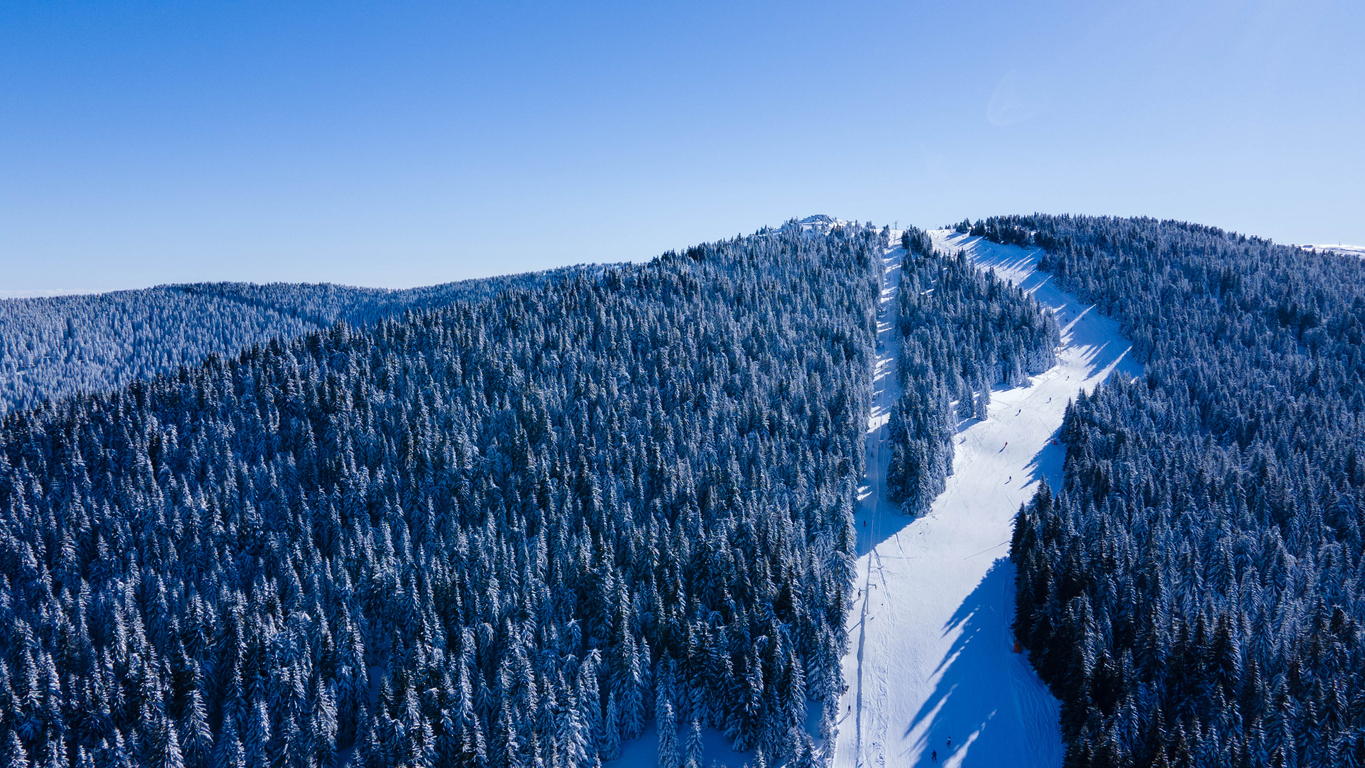
If you’re really keen to experience some European snow, book your trip for the winter! In particular, the month of January is most snowy.
Here’s a breakdown:
High season: December to February
These are the prime months for snowfall in most European destinations.
During this time, popular ski resorts in Switzerland, Bulgaria and Poland are busy and the slopes look their best!
Availability of accommodations can be scarce, and prices soar, so booking in advance is advisable.
Low-lying places in Europe may also have snow during these months – typically the further north and further inland you are, the higher your chance of seeing some snow.
If you find yourself in Lapland or Iceland during these months, the chances of witnessing the Northern Lights increase dramatically due to the decreased darkness!
Late winter season: March and April
The ski season doesn’t necessarily end as winter transitions to spring.
Many resorts, especially those at higher altitudes, continue through April!
While snowfall can be a bit more unreliable, slopes often use the accumulation of snow throughout the cooler period. Plus there are fewer crowds, and it can be a lot cheaper!
The weather is milder but still cold enough to keep the slopes in good condition.
Snow can still happen in continental locations in Europe, such as Berlin or Warsaw, but it’s rare in more coastal locations, including England.
But venture to the far north of Europe – the Arctic – and you’ll still find plenty of snow!
Snow-free period: May to September
For the most part, these are the months where snow is the least likely to be found across most of Europe.
Glaciers at high elevations might still be snowy, but generally, snowfall is rare.
The beginning of winter: October and November
In places like Arctic Norway, snowfall begins in October, but most places in Europe don’t see it until November. There’s usually not enough snowfall to open ski resorts until the start of December, but some open for early-season skiing.
Why does it snow in Europe?

So, why does it snow in Europe?
Situated in the Northern Hemisphere, Europe experiences a variety of climates, ranging from Arctic in the far north to the Mediterranean in the south.
These differing climates contribute to the patterns of snowfall across the continent.
Influence of the Arctic
Northern countries like Norway, Sweden, and Finland are influenced by the Arctic climate, which means long, cold winters with ample snowfall are the norm.
The proximity to the Arctic Circle plays a significant role in the persistent snow conditions in these areas.
Mountain ranges
The presence of major mountain ranges, such as the Alps, Pyrenees, and Carpathians, greatly impacts snowfall in Central and Southern Europe.
These mountains not only create a barrier for weather systems but also provide the high altitudes necessary for snow to form and persist.
As moist air ascends these slopes, it cools and condenses, leading to snowfall.
Ocean currents
Europe’s weather is also influenced by ocean currents like the North Atlantic Drift, a warm current that moderates temperatures in Western Europe.
While it may lessen the severity of winters and is a reason why many coastal locations in Western Europe don’t become cold enough for snow, it also introduces moisture into the atmosphere, creating conditions favourable for snow when a cold front is present.
Latitude and interior geography
Countries that are further east, like Poland, Ukraine, and Romania, experience snow partially due the influence of continental climate systems.
Winters here are generally colder than in Western Europe due to the lack of oceanic influence – colder temperatures are more likely to settle in here – this makes it it conducive for snow to form.
Short-lived snow in the south
While it’s rare, Southern Europe does see some snowfall, particularly in mountainous regions like the Sierra Nevada in Spain or high-altitude areas in Greece.
But generally, the Mediterranean climate and lower altitudes make snow less common.
Where does it snow in Europe?
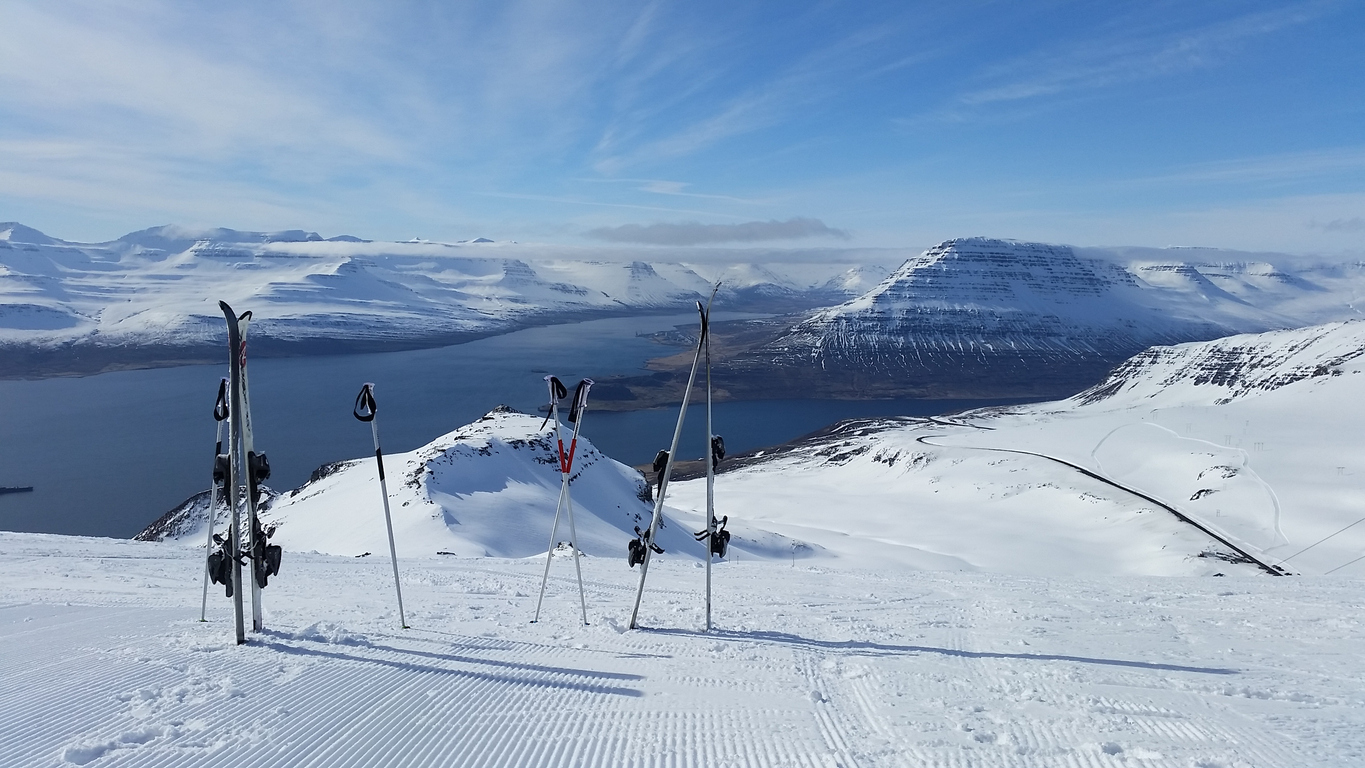
So, where can you expect snowfall in Europe? Let’s break it down region by region.
Don’t forget to click through to individual blog posts to find out more information about each country, region or city!
Northern Europe
Northern Europe is one of the most reliable places to go on the continent for consistent snowfall in the winter season.
Thanks to its proximity to the Arctic, you can expect freezing conditions and plenty of snow and ice throughout the winter period!
But you might not necessarily get it everywhere – the south coast of Norway, for example, doesn’t always see snow.
Iceland
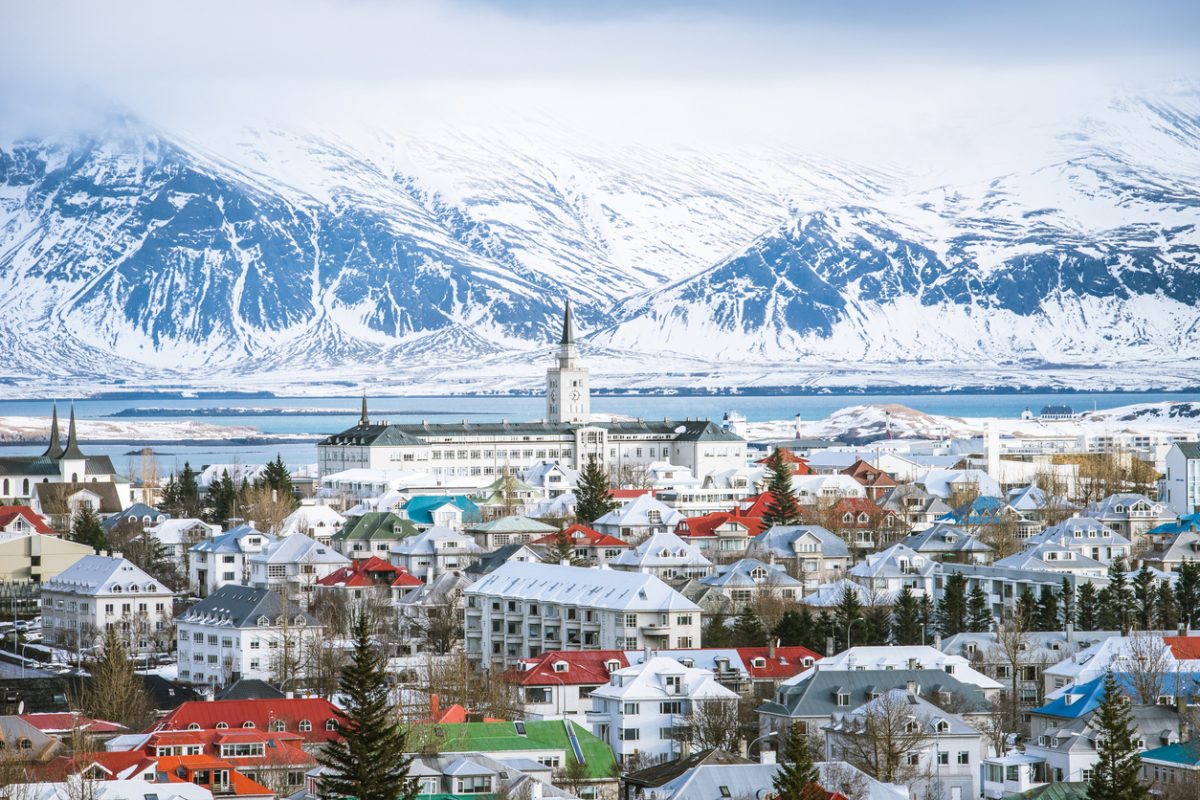
Parts of Iceland have fairly reliable snowfall in the winter, although thanks to the jet stream, winters in places like Reykjavik are sometimes warmer than you’d imagine.
You’ll still find snow in Reykjavik most of the winter through, and as soon as you venture out of the capital you’ll see snow all over Iceland!
It can snow anytime from October to April in Iceland, but it’s most common in the winter months.
Norway
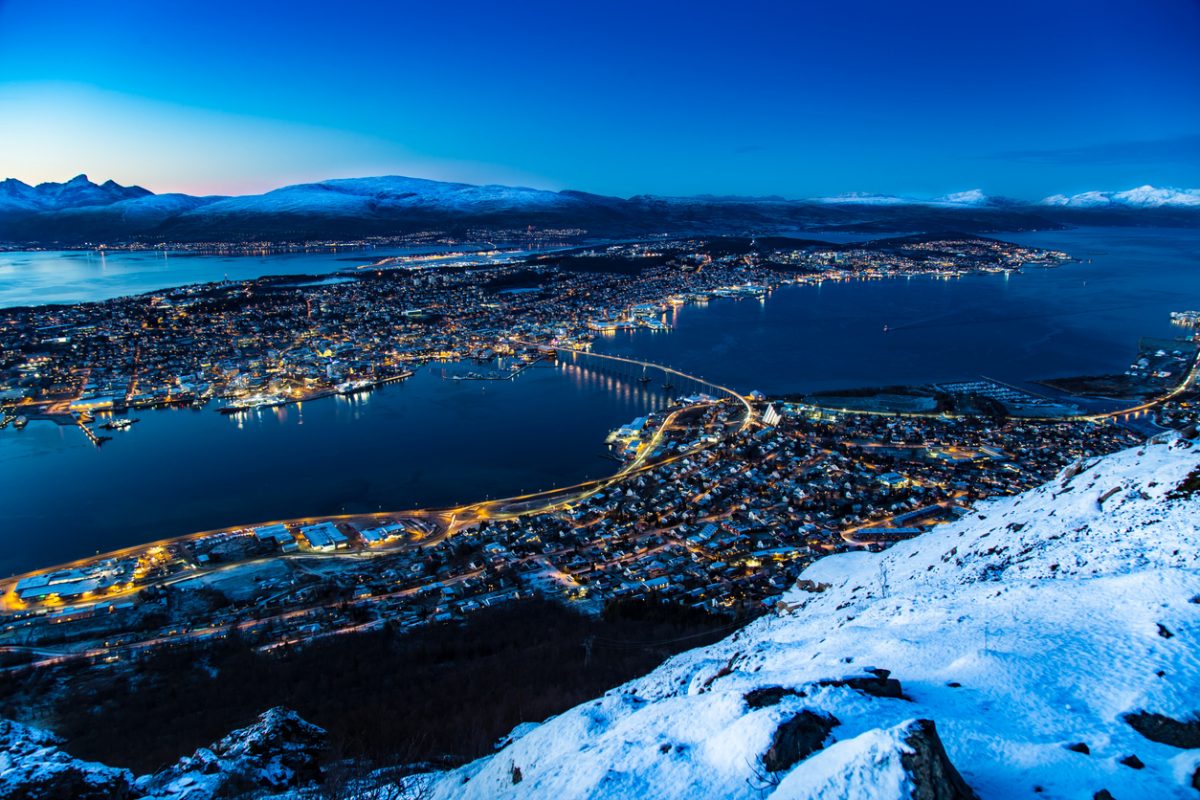
Norway’s a fairly snowy country in the winter months, with some snowfall starting as early as October and lasting until April, but some cities on the west and south coast such as Bergen and Stavenger have less reliable winter weather.
Oslo, Norway’s capital, typically has lots of snow throughout the season, and you can even go skiing just a metro ride from the centre!
Tromsø is Norway’s winter hub, and snowfall is frequent here throughout the seasons – although you can quite easily see the impacts of climate change here.
Sweden
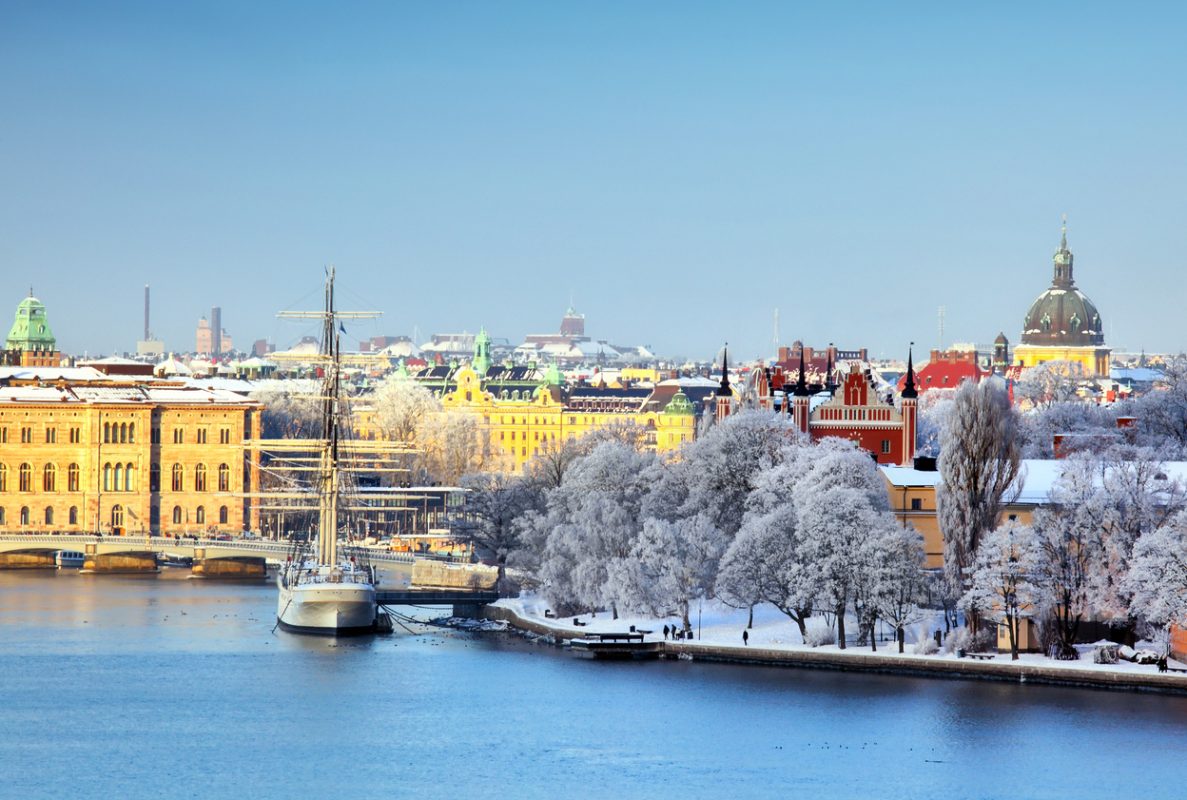
Snowfall in Sweden varies by region but is generally consistent from November to March.
In Stockholm, winters can be milder than you might expect, though the city still experiences several weeks of snow cover.
The northern parts like Lapland are another story altogether; expect snow-covered landscapes that seem to stretch endlessly.
Kiruna, in particular, is well known for its dog sledging and snowmobiling!
Skiing and snowboarding are popular activities, with resorts like Åre attracting winter sports enthusiasts from around the world.
Finland
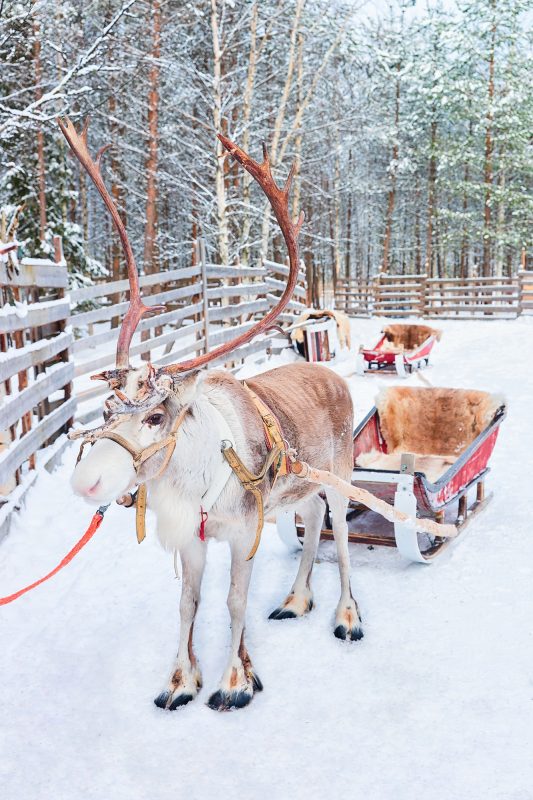
In Finland, winter and snow go hand in hand.
The southern regions, including the capital Helsinki, usually see snow from December to March.
However, don’t be surprised to encounter snowfall as late as April.
Then, venture north to Lapland.
The winter months offer a variety of activities, from reindeer safaris to catching a glimpse of the Northern Lights!
Ski resorts like Levi and Ruka are popular, with a range of slopes that cater to different skill levels.
Denmark
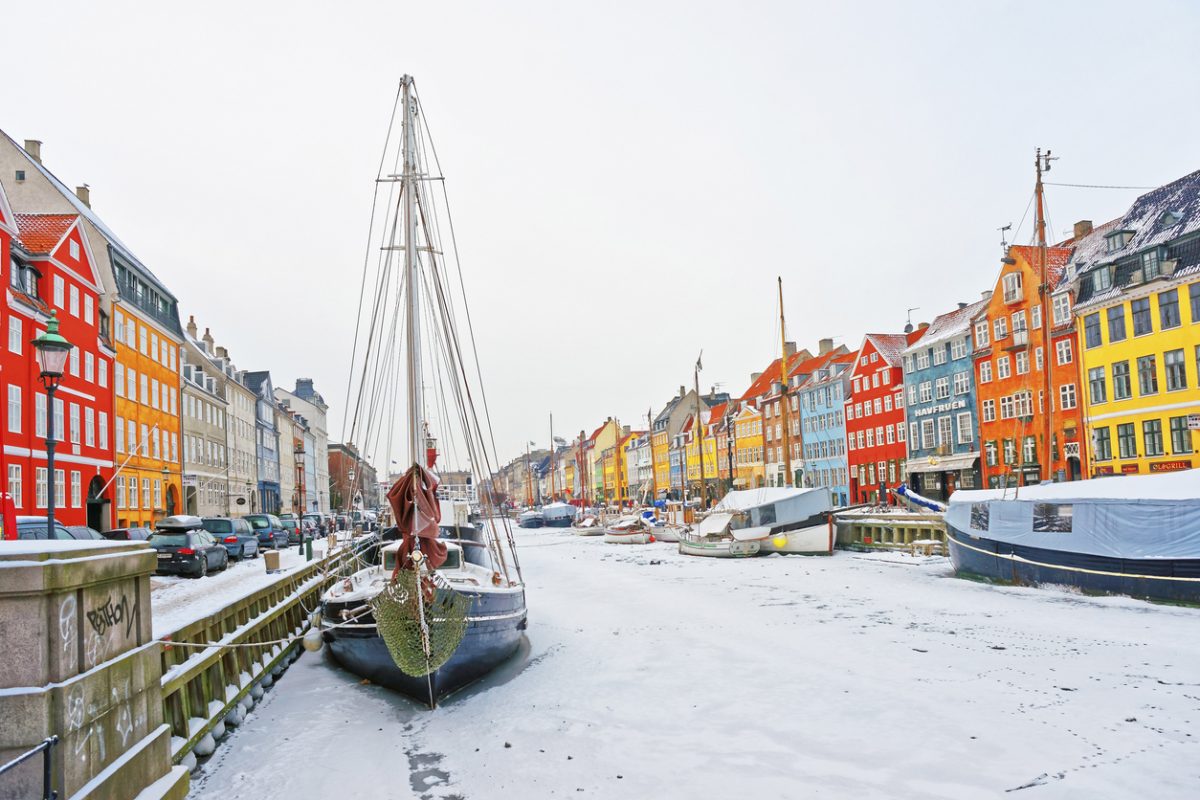
Copenhagen may see a dusting of snow during the winter months, but it often melts quickly.
That said, if you head to areas like Jutland or Funen, you’ll find more consistent snow cover.
While Denmark isn’t a ski destination, it does offer charming winter landscapes ideal for cosy hygge and winter walks!
Western Europe
Western Europe has a more nuanced winter landscape when it comes to snowfall.
While you’ll find several regions boasting substantial and dependable snow, it’s not a guarantee across the board!
Thanks to notable mountain ranges like the Alps and the Pyrenees, certain areas are winter sports paradises, offering both quality and quantity in terms of snow.
Yet, venture away from these snowy epicentres, and the likelihood of encountering a winter wonderland decreases.
Some lowland and coastal areas may go an entire winter with only a dusting – if any snow at all.
France
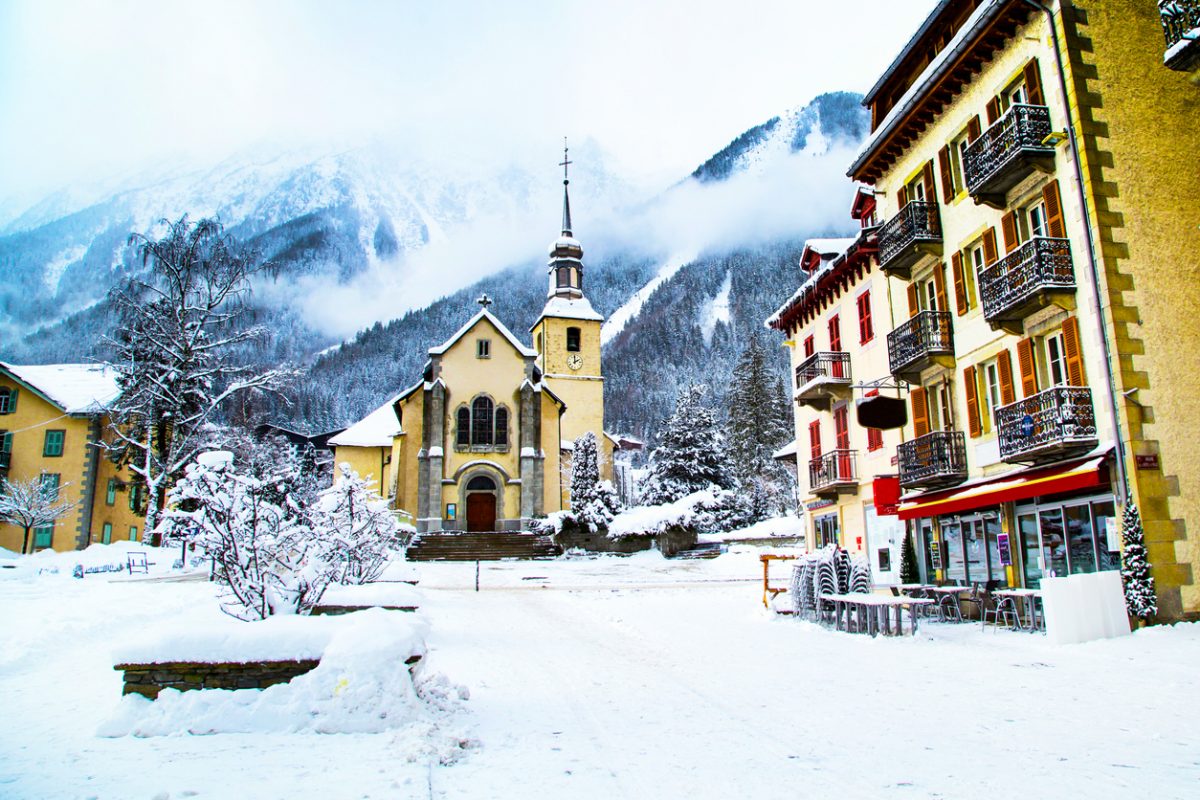
Snow in France really varies depending on where you set your sights!
In Paris, snowfall is rare but magical, transforming the city into a scene straight out of a painting!
Move eastward to the Alsace region, and you’ll find slightly more reliable snowfall, turning the area into a winter postcard with its charming villages and wine routes. This region is famous for its Christmas markets, and they’re particularly scenic after slightly snowfall!
Southern France generally sees less snow, but that doesn’t mean it’s entirely absent. But the closer to the Mediterranean coast you are, the less likely you are to see snow.
And on the West Coast, cities like Bordeaux and Nantes are more likely to see rain than snowflakes!
Of course, if it’s a snow surety you’re after, the French Alps and Pyrenees are your go-to spots.
These mountain ranges are the epitome of winter sports in France, with destinations like Chamonix and Val Thorens providing snow-covered slopes nearly guaranteed throughout the winter season.
The Netherlands
The Netherlands rarely experiences heavy snowfall, largely due to how flat it is.
Also, most of the country is very close to the coast!
However, it can happen every so often, thanks to its relatively northern latitude.
Inland areas like Utrecht and Arnhem are generally the most likely places to witness snowfall. Snowy Amsterdam is quite unusual!
Belgium
Belgium’s winter climate is similar to that of the Netherlands; snow’s occasional, not expected.
Cities like Brussels and Antwerp might see a dusting that lasts a few days, but it’s rarely disruptive.
For more consistent snow, head to the Ardennes region, particularly if you enjoy winter hikes or cross-country skiing.
While not a ski destination per se, the Ardennes offers a more rustic and natural winter experience.
Germany
It snows in Germany, but not everywhere!
Berlin has occasional snow, but cities like Hamburg don’t often see it, thanks to their proximity to the ocean.
Head to the Bavarian Alps, however, and it’s a different story.
Munich often serves as the gateway to Germany’s mountains, being close to renowned ski resorts like Garmisch-Partenkirchen.
The Black Forest region also sees frequent snow.
Snow’s not guaranteed in any cities in Germany in December, but if you want the highest chance of seeing the white stuff at Germany’s fabled Christmas markets, head to Nuremberg or Dresden.
Switzerland

Switzerland is synonymous with winter sports, thanks to the iconic Alps that sprawl through most of the country.
It can snow anywhere in Switzerland in winter: cities like Zurich and Geneva may receive moderate snowfall, but it’s the mountain regions where winter truly comes to life.
Zermatt, St. Moritz, and Verbier are just a few of the renowned ski destinations that offer dependable snow conditions.
But it’s not all about skiing and snowboarding; you can enjoy winter hikes, snowshoeing, and even tobogganing in these regions.
For those who prefer their snow with a side of luxury, Switzerland’s alpine resorts offer top-notch amenities and breathtaking mountain views, making the country a top choice for those who want their winter activities paired with unparalleled comfort!
Austria
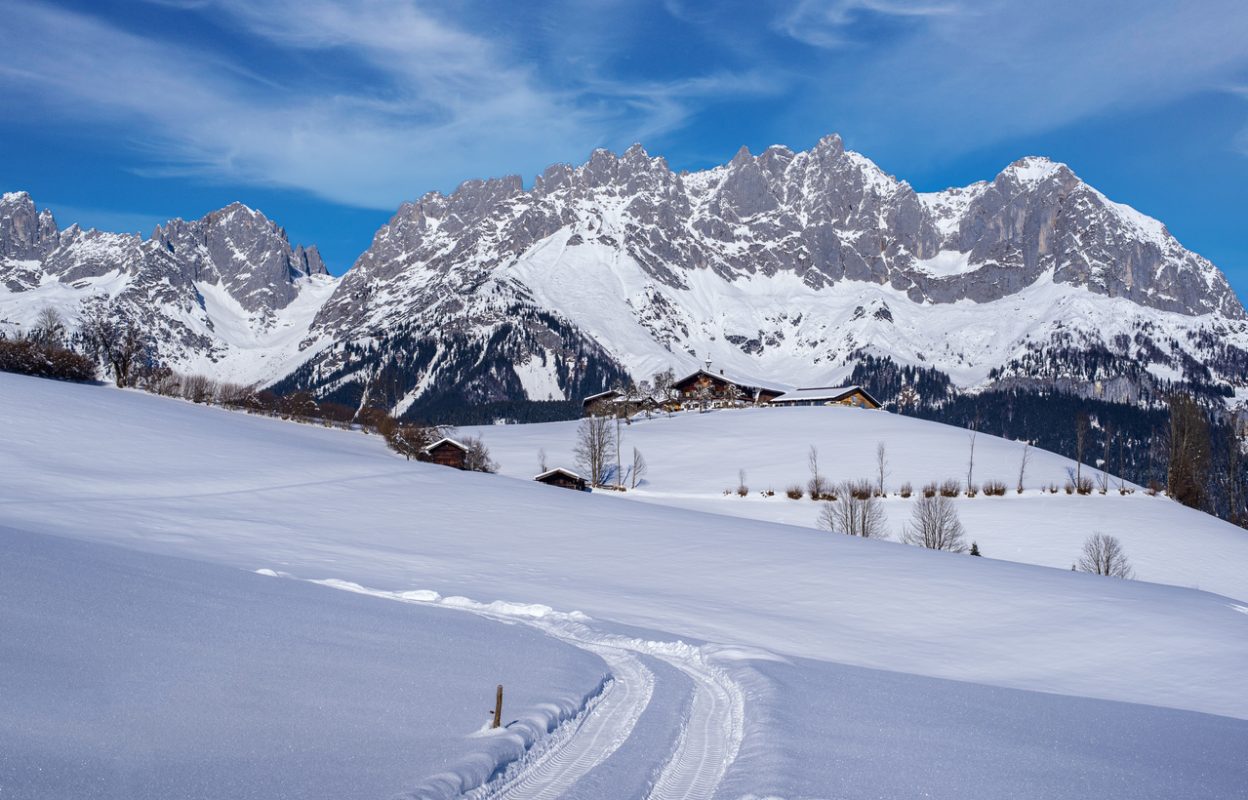
Austria is also very snowy in winter.
The Austrian Alps are a winter sports enthusiast’s dream, with famous ski resorts like Kitzbühel and Ischgl providing a range of slopes for all skill levels.
Beyond skiing, Austria offers winter activities like ice climbing, snowshoeing, and sledding, which are especially popular in areas like the Hohe Tauern National Park.
Cities like Vienna and Salzburg experience periodic snowfall, adding a seasonal charm to their historic streets and architecture when it happens!
The British Isles
The British Isles in winter is… mixed.
Snowfall is far from a guarantee across the region – in England, it usually only happens once or twice a year.
However, the likelihood of snow increases ever so slightly as you venture northward or to higher elevations.
When snow does make an appearance, it often lends a poetic charm to the countryside!
England
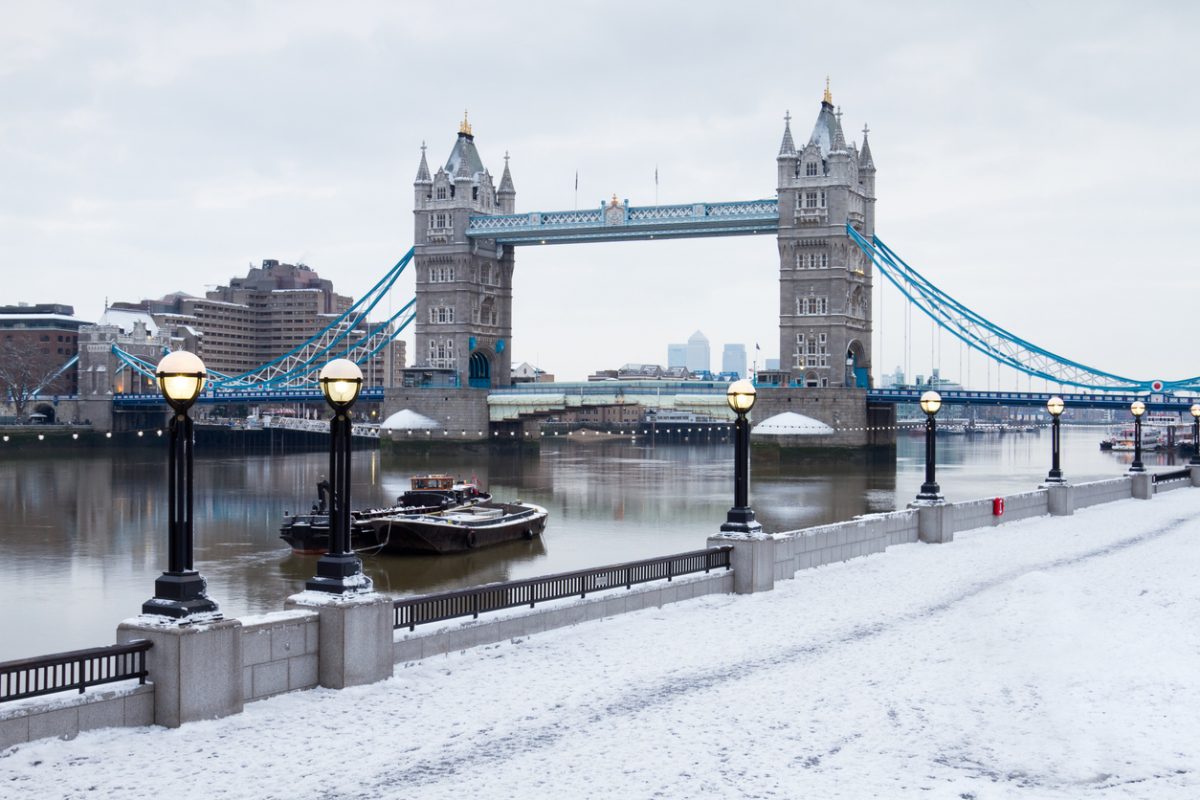
England and snow vary widely, both regionally and year-to-year.
But generally, it only snows 1-2 times per year, although it’s a bit more common in higher elevation areas.
London does see snowfall but it’s often short-lived. When it does happen, however, it can really disrupt daily life for a day or two!
Northern cities such as Manchester and Leeds see snowfall a bit more regularly, but even there, it’s usually not abundant.
When snow does fall, it lends an extra layer of charm to England’s already picturesque countryside!
Spots like the Lake District are popular for winter hiking and maybe even sledging.
Scotland

Scotland is more likely to have regular snowfall, especially in regions like the Highlands.
Skiing and snowboarding are available in areas like Cairngorm and Glencoe – but be aware that the conditions can be more unpredictable than in other European ski destinations!
Even Scotland’s cities, such as Edinburgh and Glasgow, sometimes see snow.
Wales
In Wales, snow is less frequent but still possible, particularly in mountainous areas like Snowdonia.
Cities like Cardiff may see the occasional snowfall, but it’s usually more a novelty than a seasonal expectation.
Nonetheless, the Welsh landscape takes on a distinct beauty when snow-dusted!
Ireland
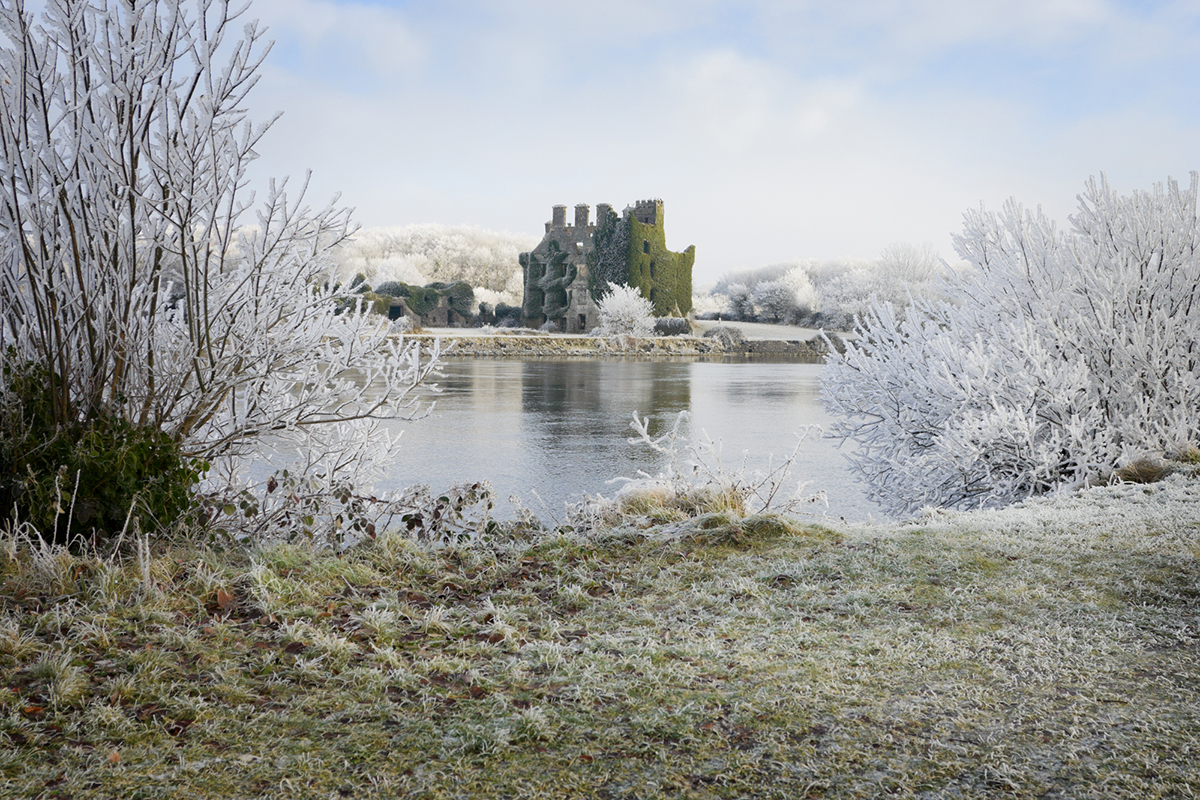
If you’re wondering does it snow in Ireland and are keen to see some during your winter trip, bad news: Ireland generally experiences milder winters compared to other parts of the British Isles.
Snowfall is rare but not impossible, particularly in inland and northern areas.
When it does snow, the already green and rocky landscape takes on a softer, more muted tone that’s worth experiencing.
Cities like Dublin and Cork may see a dusting every now and then, but it’s rarely heavy enough to last. In Ireland, winter is more often characterized by rainy and windy conditions than by a blanket of snow.
Central Europe
Central Europe’s no stranger to snow.
While the region’s cities don’t guarantee consistent snowfall every winter, they do have a moderate chance of receiving at least some!
Mountainous areas in this region offer a much higher likelihood of consistent snow conditions.
These elevated terrains are reliable spots for winter activities, attracting visitors eager for skiing, snowboarding, or snowshoeing.
Poland

Snow’s common in Poland, thanks to its continental climate.
Warsaw, the nation’s capital, is no stranger to snow – although local friends have told me that in recent years it’s snowed a lot less due to global warming.
Krakow sees slightly more snowfall, thanks to its proximity to the mountains.
It’s these mountains – the Tatra Mountains – that become a winter playground in the snowy season!
Whether it’s taking a scenic cable car ride up to Kasprowy Wierch or snowshoeing through less frequented trails, Poland’s natural beauty is amplified by winter!
Hungary

Hungary’s winters are relatively mild, particularly in urban areas like Budapest, where snowfall is infrequent but not entirely uncommon.
When it does snow, the historic architecture and the Danube River take on an extra layer of beauty.
In the Hungarian countryside, winter tends to be more pronounced.
Hungary does have a few ski and snowboarding resorts, although they’re generally better suited for beginners.
Czech Republic
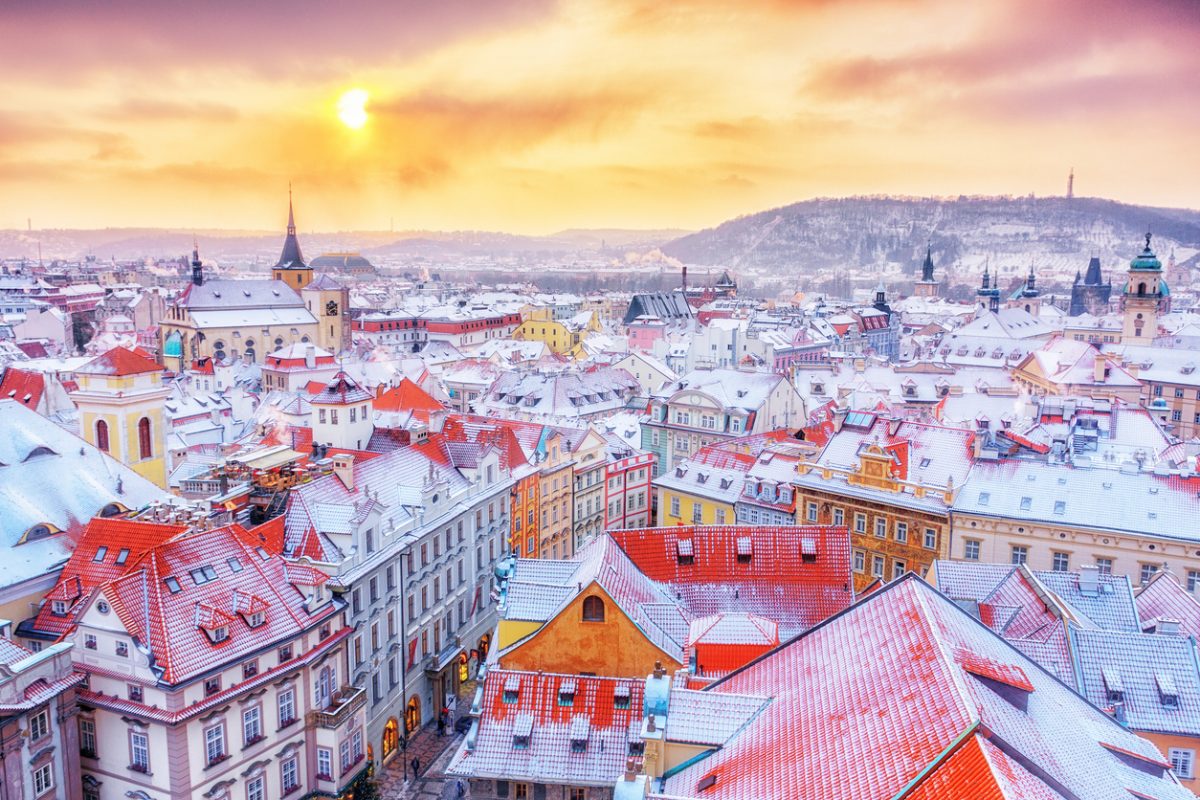
In Czech Republic (or Czechia, as it’s now called), cities like Prague, with historic castles and bridges, become even more enchanting under a layer of snow.
For the more adventurous, mountain ranges such as the Krkonoše provide a setting for winter activities like skiing and snowboarding.
While the country isn’t primarily known for its winter sports, it does offer a selection of slopes that cater to various skill levels.
Slovakia
Slovakia is a lesser-known winter destination!
The High Tatras mountains serve as the main hub for winter sports, boasting several ski resorts.
Snowfall is more consistent in these elevated regions, making them ideal for a range of winter activities.
Urban centers like Bratislava experience snowfall periodically, but it’s not common throughout the whole winter.
Balkans
In the Balkans, snowfall varies, depending on if you’re in the coastal areas or the inland mountainous regions!
Along the coastline, where the Mediterranean climate reigns, snow is rare.
Here, winters are milder, and even if temperatures do drop, the likelihood of snow is low.
Contrast this with the region’s interior, especially the mountain ranges, where snow’s usually abundant!
There are kiing, snowboarding, and snowshoeing opportunities here.
The snow cover in these areas often lasts through the winter season, offering a robust span of time to partake in your favourite winter activities.
Slovenia
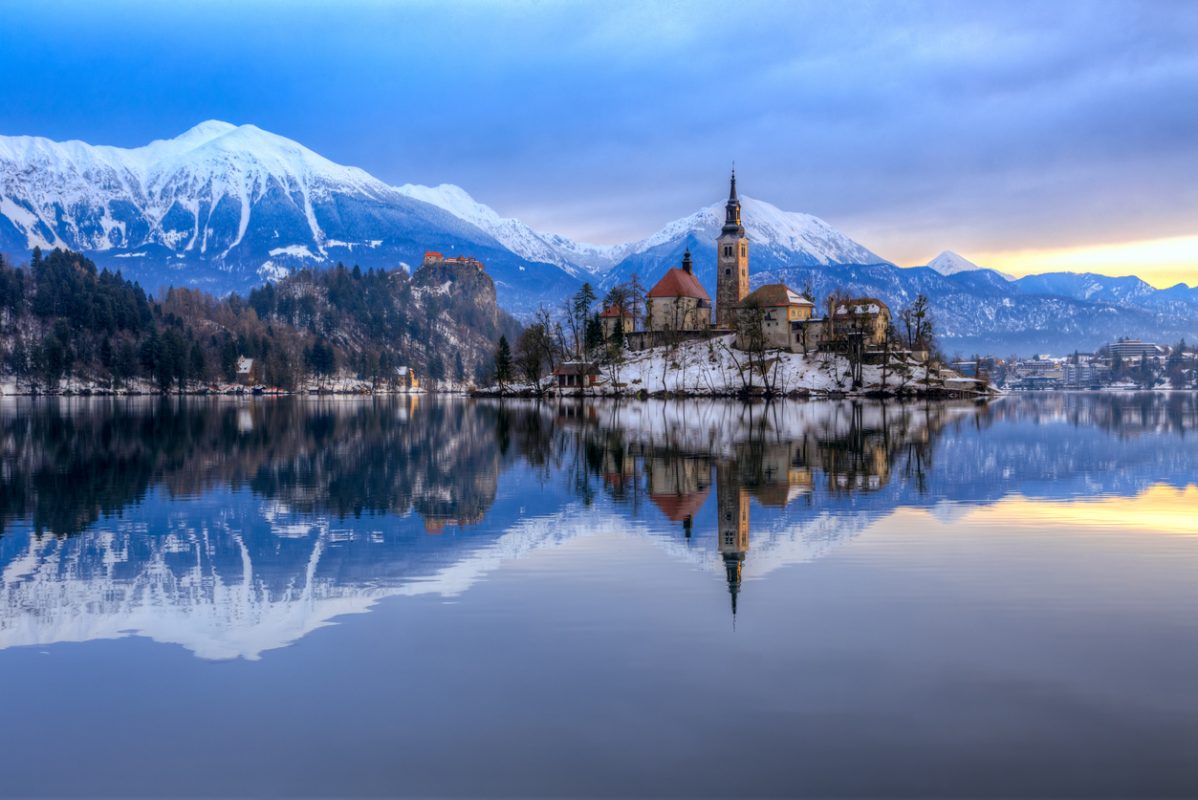
It can certainly snow in Slovenia!
The Julian Alps and other mountainous areas of Slovenia are covered in a consistent layer of snow, offering excellent conditions for skiing, snowboarding, and snowshoeing.
Cities like Ljubljana experience intermittent snowfall – and it looks even more beautiful under a snow covering!
Croatia
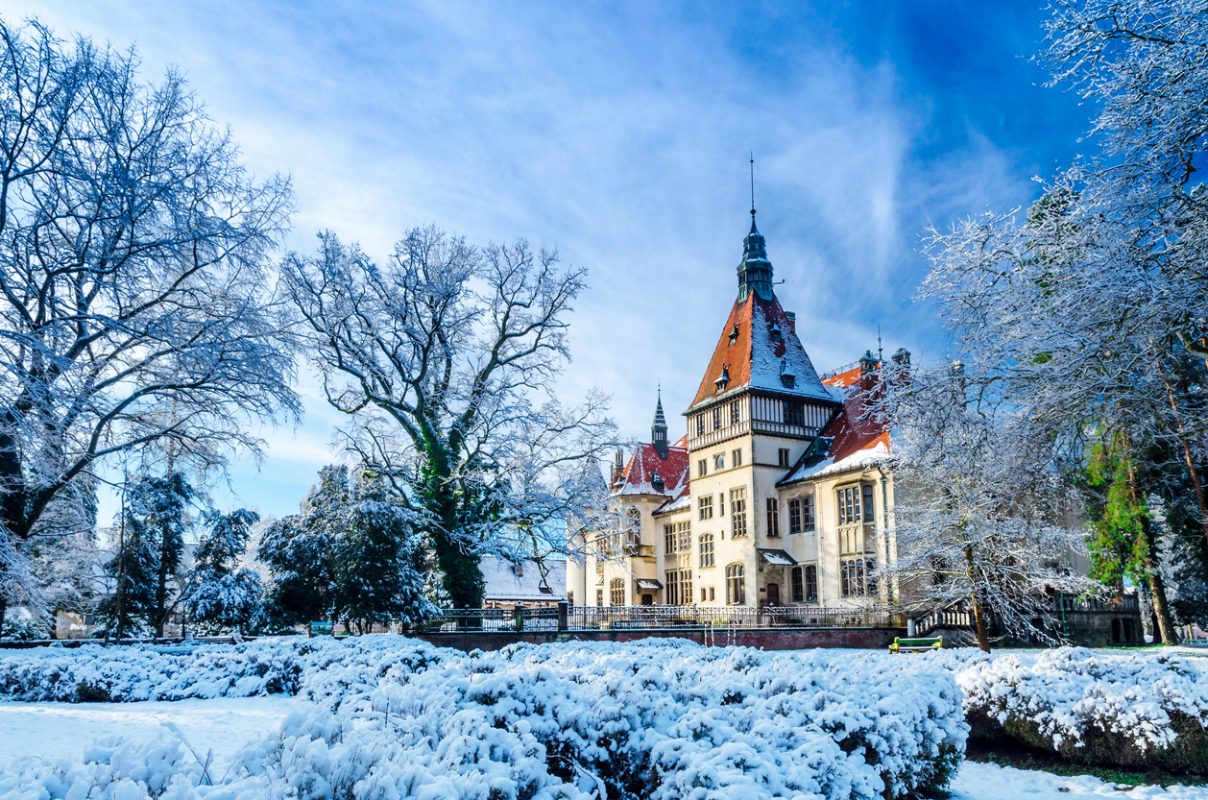
Croatia’s not synonymous with cooler winter weather, and indeed its coastal cities like Dubrovnik and Split seldom see snow.
But places around the Plitvice Lakes and the Dinaric Alps have more reliable snowfall in winter; although not as much as other European destinations!
Montenegro
Montenegro has quite a varied winter landscape.
Though the coastal regions such as Budva and Kotor rarely see snow, it’s quite common in the northern mountain ranges like Durmitor, where there are ski resorts!
Albania
Snow in Albania is generally confined to the mountainous regions in the north and east.
While coastal and lowland areas, including the capital Tirana, have milder winters, places like the Albanian Alps get a good amount of snow.
Bosnia
Bosnia is an underrated place for snow.
Places like Jahorina and Bjelašnica mountains have dependable snowfall and are well-equipped for winter sports.
Cities like Sarajevo do see snow, though not consistently.
Serbia

It can snow throughout Serbia, although the surest bet for consistent snow lies in the mountainous regions.
Places like Kopaonik and Tara are winter hotspots, receiving dependable snowfall ideal for skiing, snowboarding, and other winter activities.
While the capital, Belgrade, and other low-lying areas see a more sporadic snowfall pattern, when it does snow, it adds a layer of wintry magic to the city’s already charming architecture and public spaces.
Macedonia
In Macedonia, your best chance of encountering snow is in the higher elevations, especially the Šar Mountains and other ranges.
Here, snowfall is consistent and provides excellent conditions for winter sports.
Lowland areas and cities like Skopje have quite sporadic snowfall.
Eastern Europe
In Eastern Europe, winter snowfall often depends on the proximity to the coast.
Along the Black Sea coast, you’ll find milder winter temperatures and less frequent snow.
But venture inland, particularly into the elevated regions, and you’ll discover a more dependable snowfall pattern that holds throughout the winter months.
These areas become prime locations for winter sports, with conditions suitable for skiing, snowboarding, and other activities that make the most of the snowy terrain.
Bulgaria

Snowfall in Bulgaria is most dependable in the mountainous regions, particularly in places like Bansko and Pamporovo.
These areas offer an array of winter sports, from skiing and snowboarding to snowshoeing.
It snows sometimes in Sofia and other cities, too, although it’s become less common over the years as winters have been warmer.
Romania

Romania’s snowfall can be quite dependable, especially in the Carpathian Mountains.
Locations like Poiana Brașov and Sinaia are winter sports havens.
Cities such as Bucharest see snowfall, but nowadays it tends to be more sporadic.
Turkey
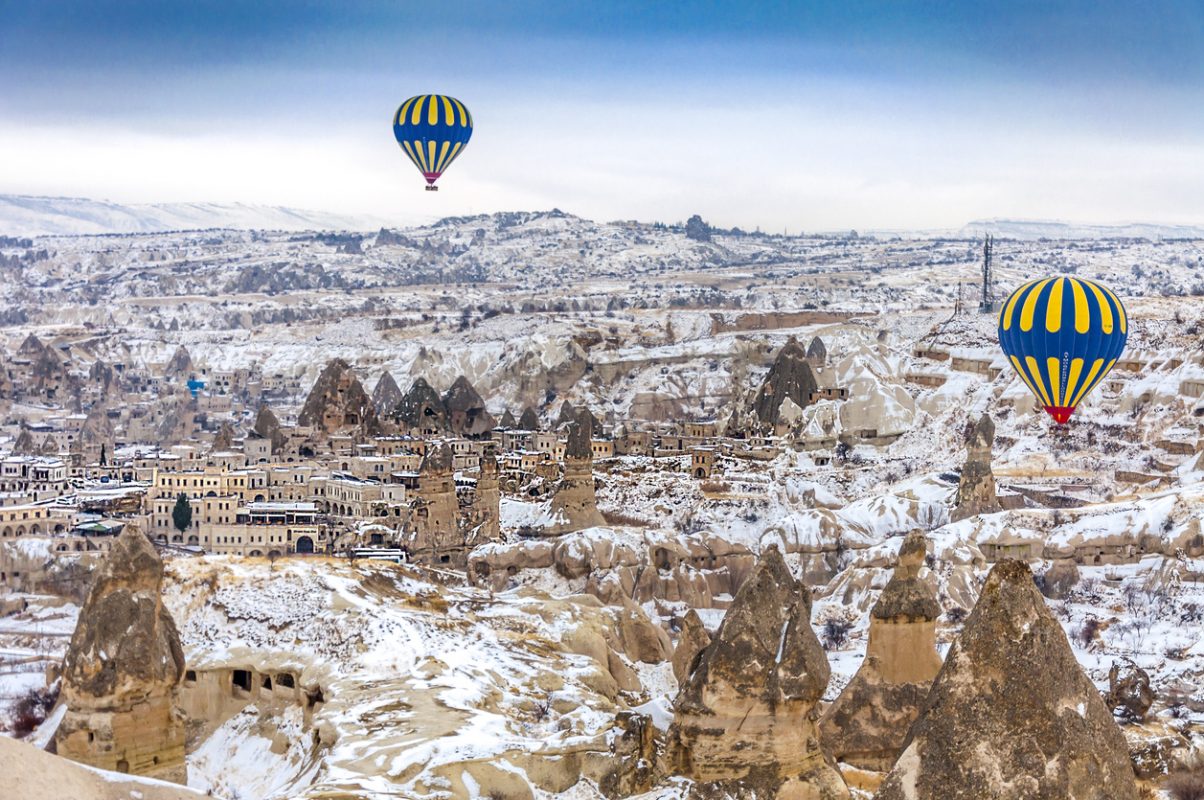
Yes, it does snow in Turkey – quite a lot in some places!
Coastal cities such as Istanbul and Izmir see infrequent snow but regions like Erzurum and Kayseri offer consistent snowfall and are popular hubs for winter sports.
Even Cappadocia, known for its unique rock formations, takes on a magical quality when sprinkled with snow – and snowfall here is quite common.
But snow on the south coast – places like Antalya and Fethiye – is rare.
Baltic Countries
In the Baltic countries, snow is reliable during the winter months.
The coastal regions might experience milder conditions, but venture inland, and you’ll find more consistent snowfall that blankets forests and fields.
Even the capital cities are quite famous for snow, and winter becomes an integral part of the local lifestyle!
Latvia
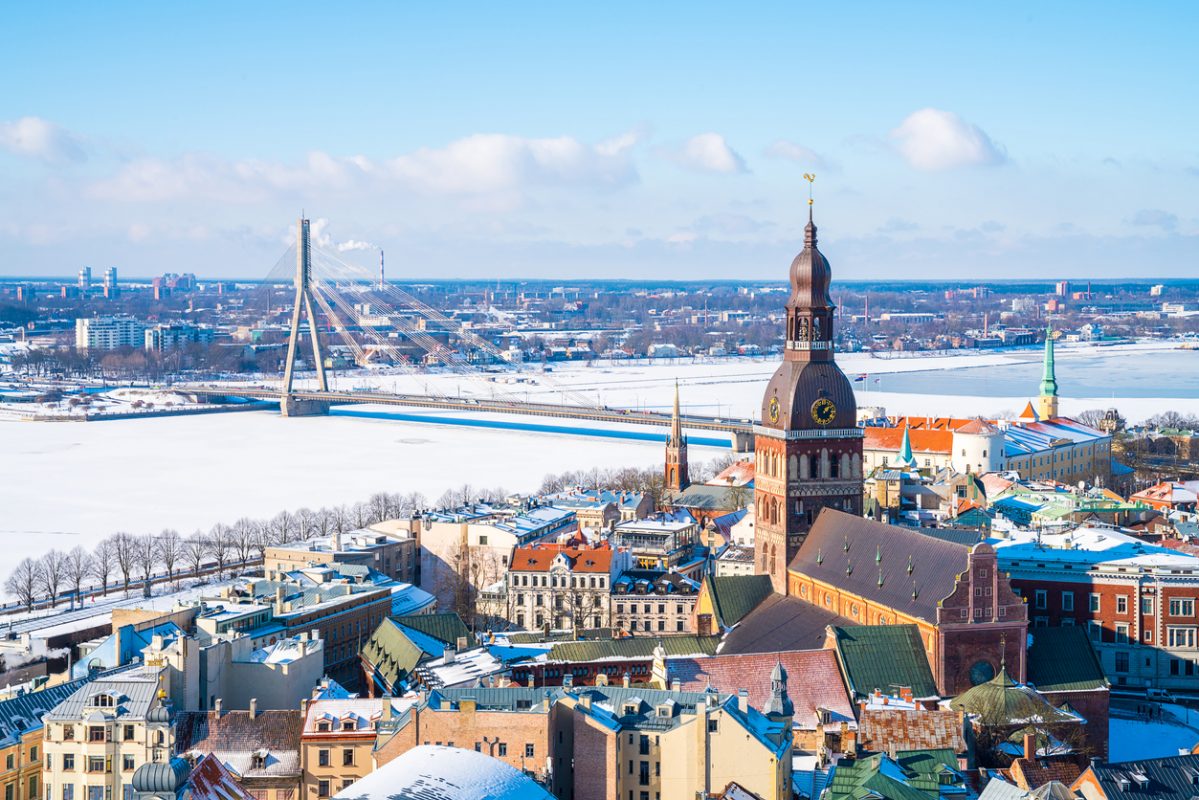
In Latvia, winter snowfall is generally reliable, especially as you move away from the coast and towards the interior.
Riga, the capital, experiences periods of snow, but it’s in the forests and natural parks where you’ll find more persistent snow conditions.
These areas are popular for winter activities like skiing and snowshoeing!
Lithuania
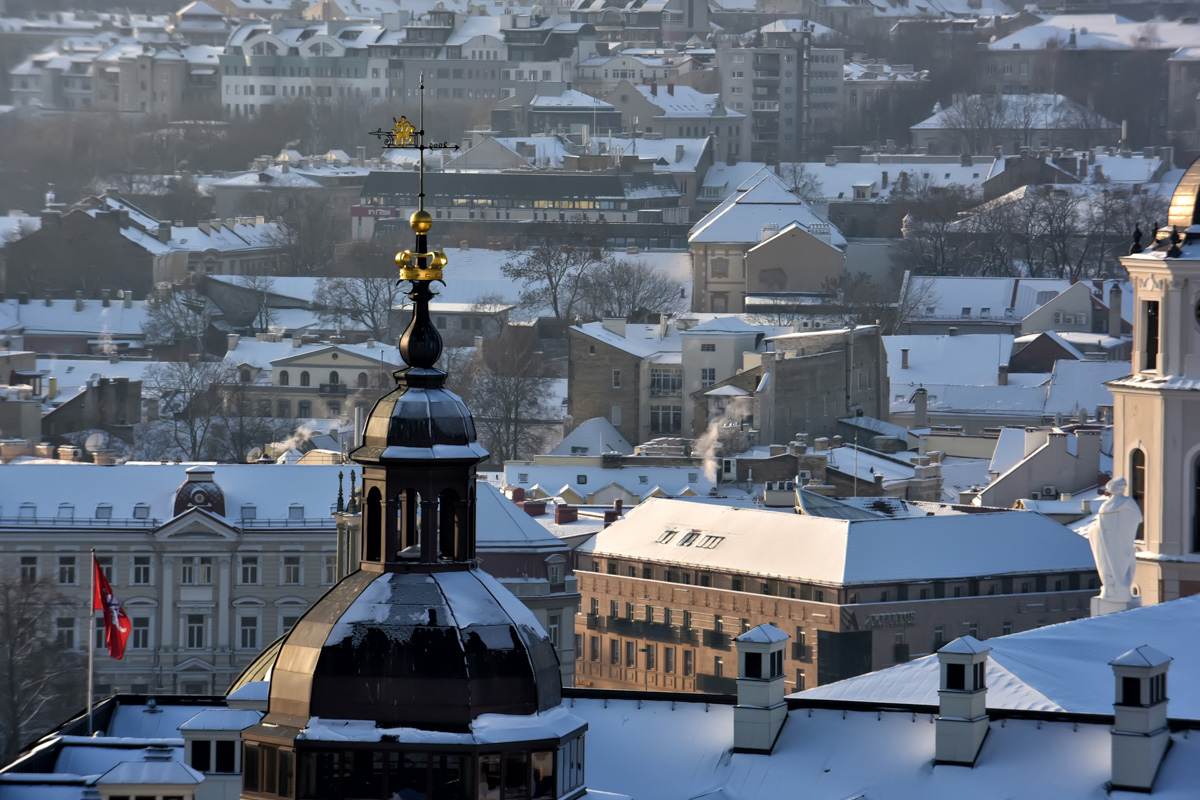
Lithuania’s snowfall is most consistent in its central and eastern regions, where you’ll find landscapes ideal for winter activities like cross-country skiing and snowshoeing.
Vilnius has a mix of snow and rain throughout the winter – but when it does snow, it transforms the urban environment into a wintry setting that complements the historic architecture.
Estonia
Estonia
Estonia has one of the most reliable snowfalls among the Baltic countries, particularly in its southern regions.
Tallinn, the capital, usually sees a fair amount of snow, making it a picturesque destination in winter!
The country’s southern areas offer excellent conditions for skiing, snowboarding, and even ice fishing.
If you’re looking for dependable snow conditions, Estonia should be high on your list!
Southern Europe
In Southern Europe, snow is quite rare – but that doesn’t mean it’s entirely absent!
Coastal regions and islands often bask in milder winter temperatures (many of them are known for their sunny winter weather) higher elevations see snow, and some area even ski resorts!
And actually, in some areas, you can enjoy the Mediterranean beaches and ski resorts on the same day!
Spain
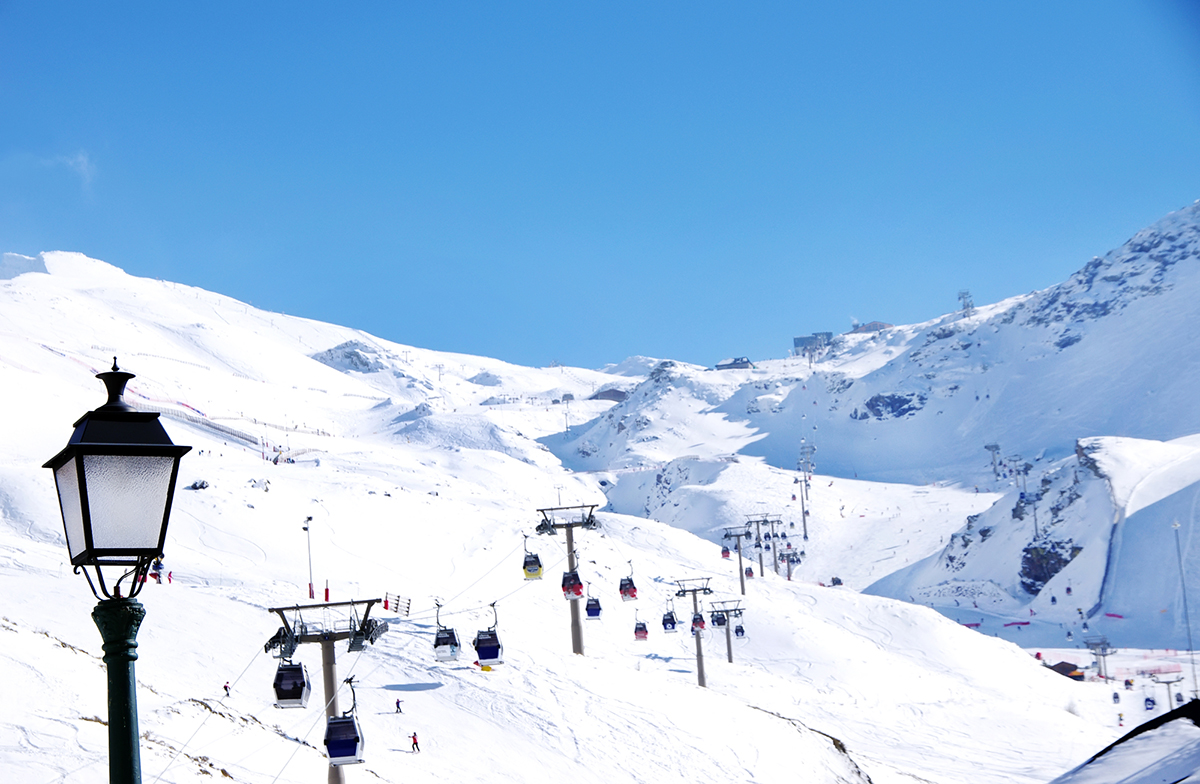
In Spain, your chance of encountering snow largely depends on the region you’re in.
It snows in Madrid once every few years, but it’s not common – and it’s virtually unheard of (although not impossible!) in coastal cities like Barcelona and Malaga.
Consistent snowfall is typically found in the northern regions and the Pyrenees.
These areas are prime locations for winter sports, with ski resorts that cater to varying skill levels.
But there’s also the Sierra Nevada, which is in Southern Spain’s Andalucia region, and is a popular ski resort too!
Portugal
Snowfall in Portugal is a rarity, primarily occurring in the higher elevations of the Serra da Estrela mountain range.
While Lisbon and Porto seldom see snow, these mountain areas offer seasonal winter sports activities.
Italy
Italy’s snowfall patterns are as diverse as its landscapes.
While cities like Rome and Naples rarely see snow, the northern regions and the Alps certainly do!
These areas are home to some of Europe’s premier ski resorts.
In contrast, the southern regions and the islands of Sardinia and Sicily are relatively snow-free, apart from in the mountains.
Malta
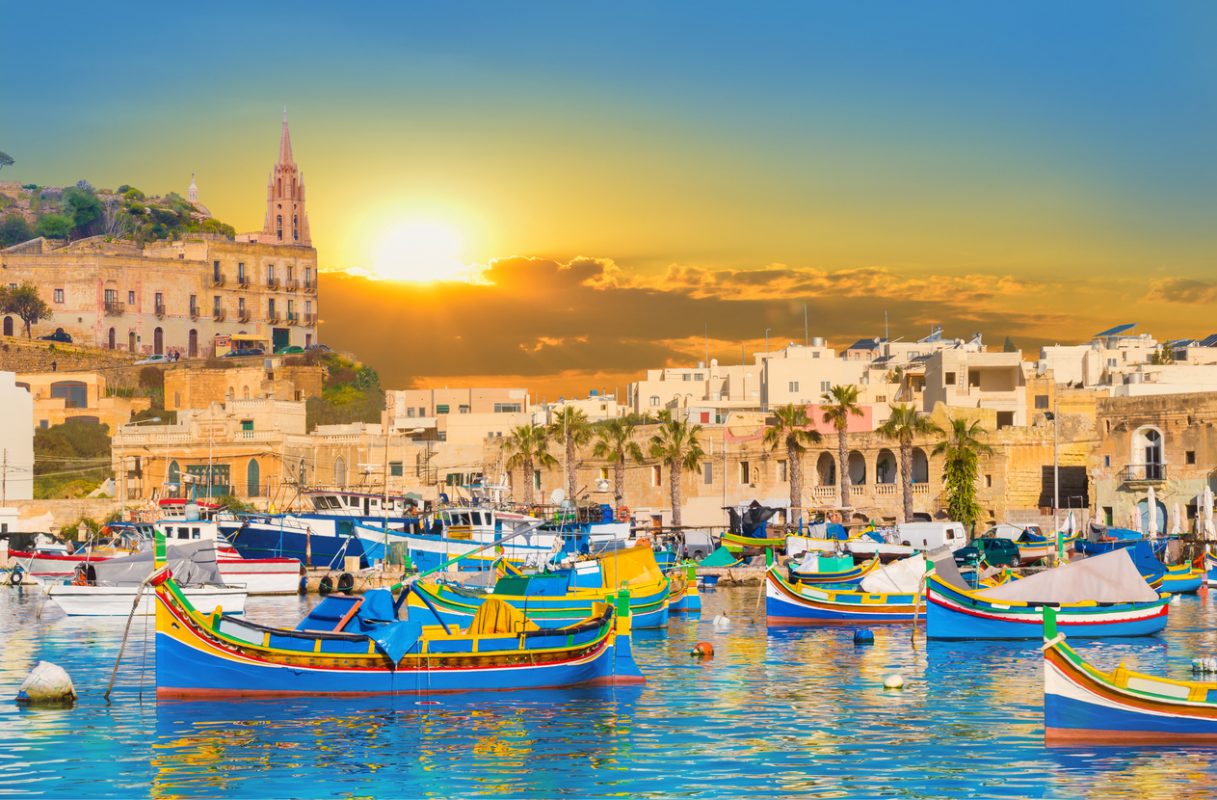
Snow in Malta is extremely rare, given its Mediterranean climate.
Winters are generally mild, making it a destination for those looking to escape harsher winter conditions.
While you won’t find traditional winter sports here, the milder temperatures offer a different sort of outdoor activity, like hiking and cycling.
Greece
In Greece, snowfall is generally confined to the mountainous regions and the northern parts of the country.
While Athens and the islands may see snowfall on rare occasions, places like Mount Olympus offer more dependable conditions for winter sports.
Cyprus
It can snow in Cyprus – it’s rare but possible in the Troodos Mountains.
While coastal cities like Limassol and Paphos have milder winter temperatures, the higher elevations give winter sports enthusiasts a chance to hit the slopes!
Snowiest places in Europe
Searching for the top 10 snowiest places in Europe? Our favourites are:
Zermatt, Switzerland
Zermatt is a snow-lover’s dream.
Situated at the foot of the Matterhorn, this Swiss village is a skiing and snowboarding hotspot.
Glacial snow means year-round opportunities for winter sports.
Luxurious chalets and world-class cuisine complete the package.
If you’re after the ultimate alpine experience, look no further!
Tromsø, Norway
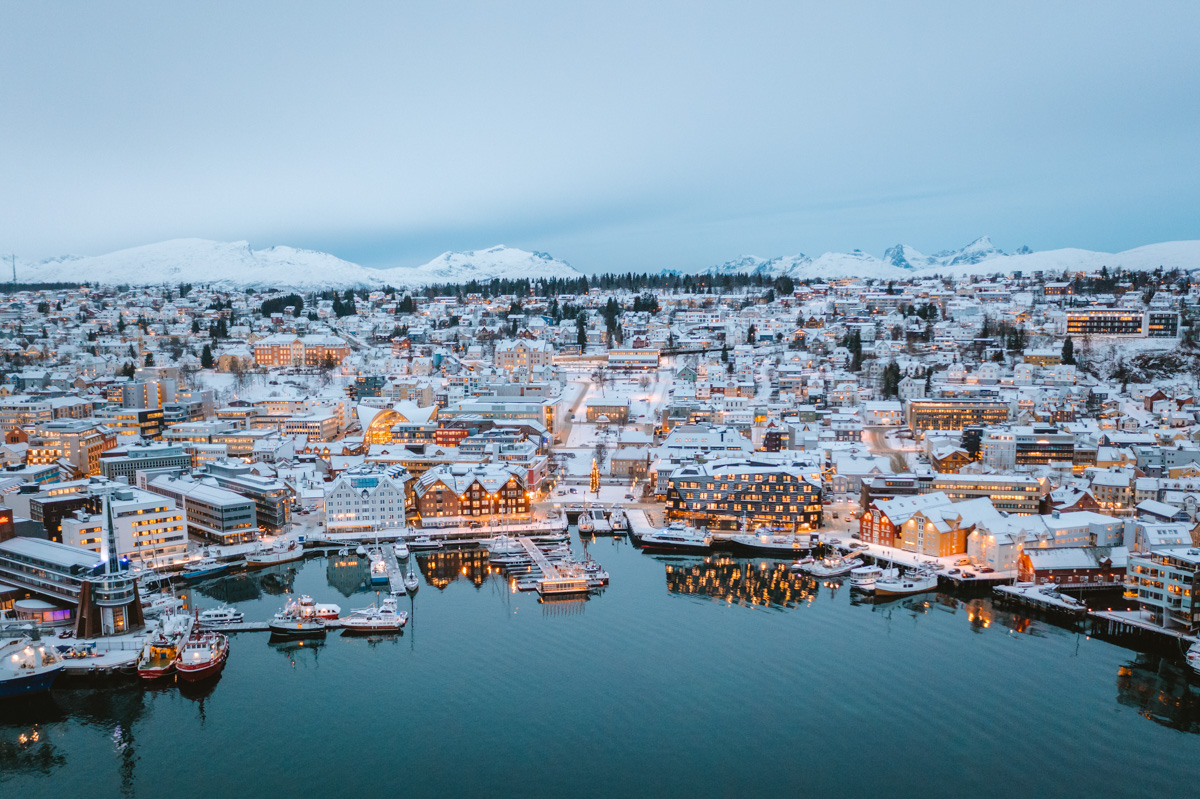
Arctic adventures await in Tromsø.
This Norwegian city offers snow sports with a side of spectacular natural phenomena, like the Northern Lights and polar nights.
Dog sledging and ice fishing are some of the more unique winter activities on offer!
Chamonix, France
A hive for extreme skiers and snowboarders, Chamonix is not for the faint-hearted.
The resort is situated in the French Alps and offers some of the world’s most challenging slopes.
Off-piste opportunities abound!
Rovaniemi, Finland
The official hometown of Santa Claus, Rovaniemi offers plenty of holiday cheer.!
Located above the Arctic Circle, the city boasts reliable snowfall and unique activities like reindeer sleigh rides and Northern Lights tours.
It’s a winter wonderland with a Finnish twist!
St. Anton, Austria
A favorite among experienced skiers, St. Anton offers challenging slopes and a vibrant après-ski scene.
Located in the Austrian Alps, it combines excellent snow conditions with top-notch facilities.
It’s a social hub as much as a sporting one!
Val Thorens, France
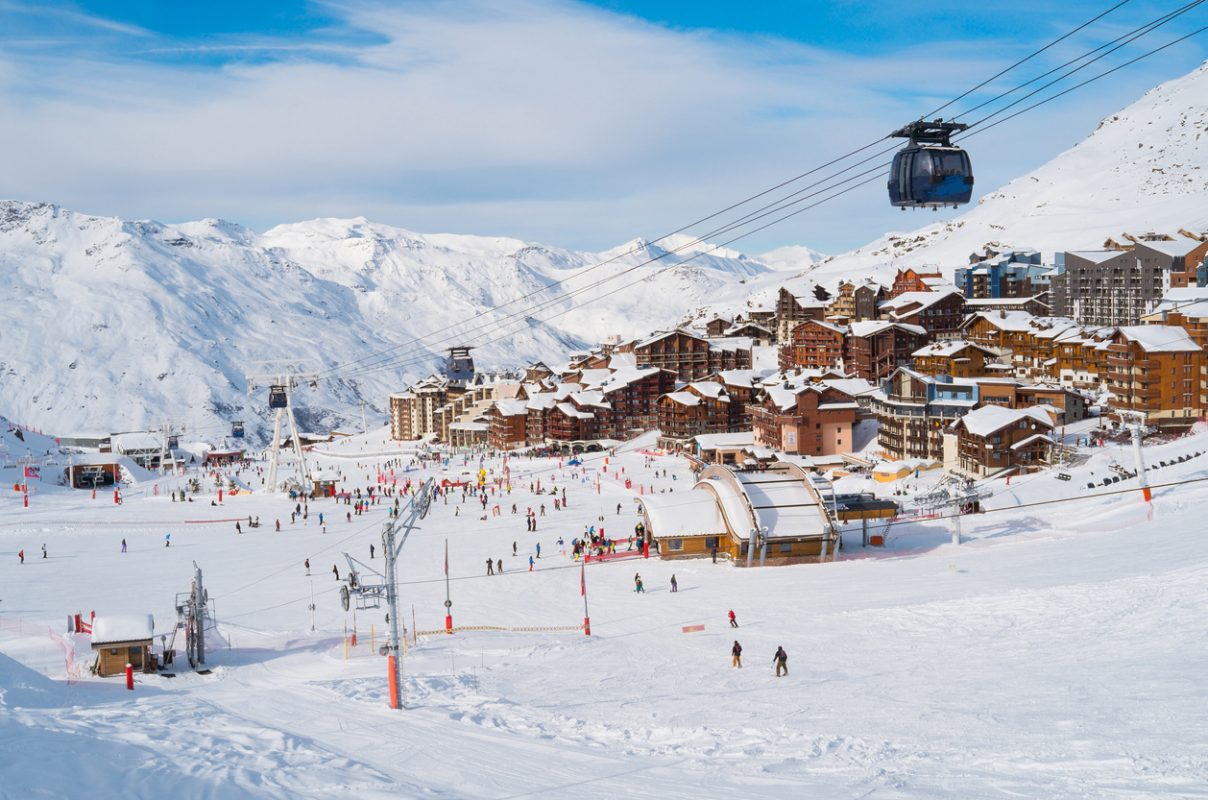
Holding the title of Europe’s highest ski resort, Val Thorens guarantees snow.
The resort is part of the world’s largest ski area, offering endless options for winter sports.
Modern lifts and great nightlife make it a full-package destination.
Bansko, Bulgaria

For a budget-friendly option without skimping on quality, Bansko’s the ticket.
This Bulgarian resort offers well-maintained slopes and a charming old town.
Affordable and less crowded, it’s a hidden gem among European ski destinations.
Cortina d’Ampezzo, Italy
Jet-setters and celebrities frequent this Italian resort, known for its glamour and scenic beauty.
Cortina offers a combination of winter sports with luxury living!
Zakopane, Poland
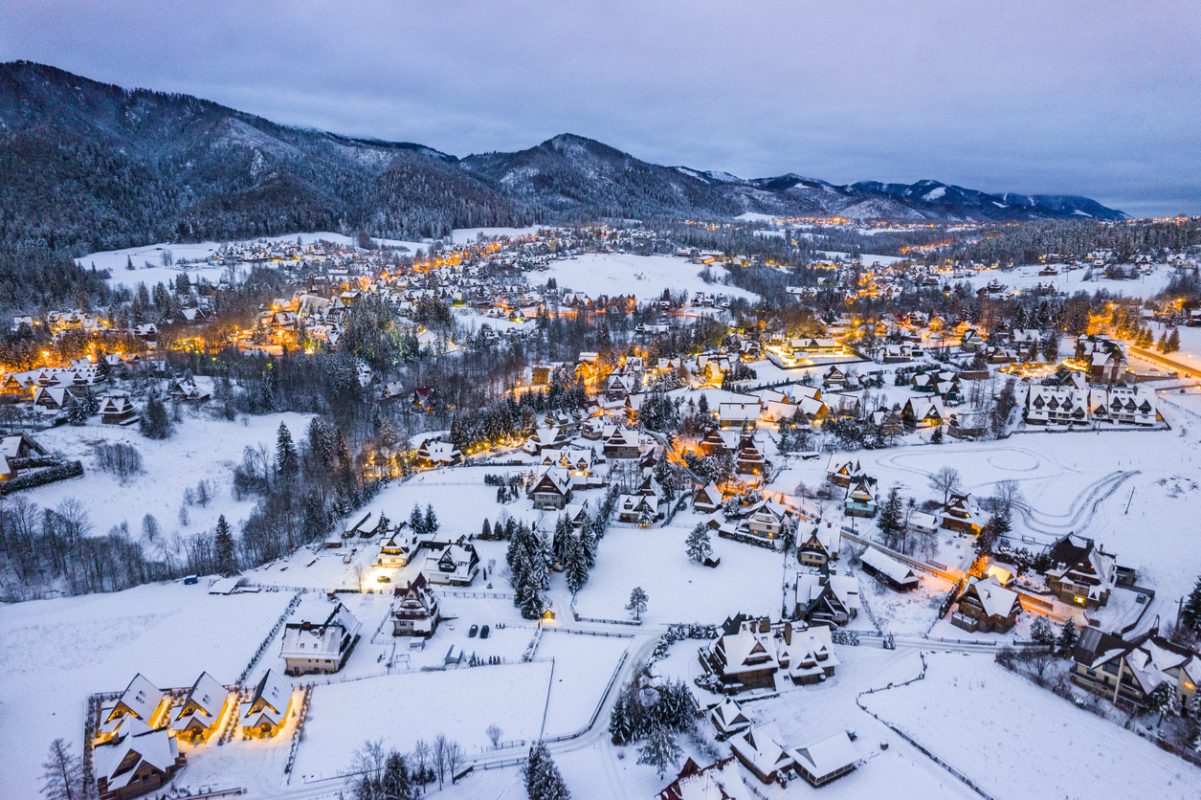
Known as the “Winter Capital of Poland,” Zakopane offers a mix of slopes for all skill levels.
The town is famous for its wooden architecture and offers a unique cultural experience.
It’s a great option for families and beginners.
Sölden, Austria
Sölden provides a dual experience: top-quality slopes and a bustling nightlife.
The Austrian resort has three peaks above 3,000 meters, ensuring consistent snowfall.
When you’re done conquering the slopes, the bars and clubs await!
Tips for Europe in the snow
Here are some of our top tips for visiting Europe in the snow:
Dress in Layers
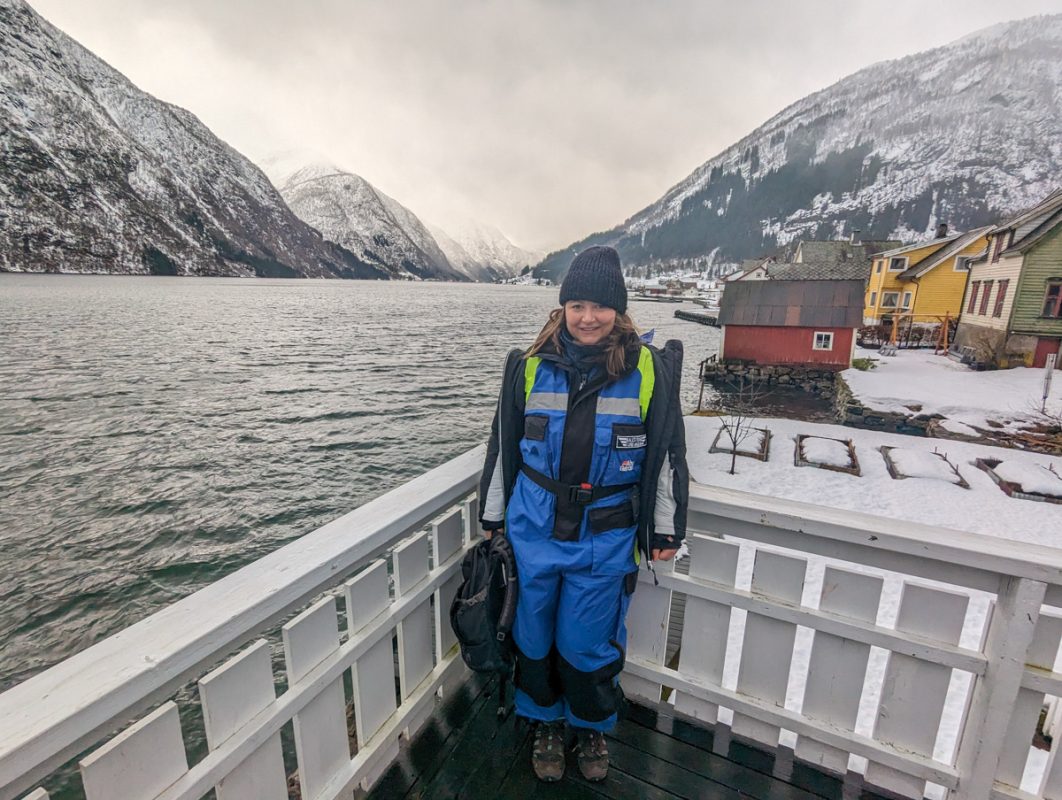
Stock up on thermal underwear, fleece mid-layers, and waterproof outer layers.
You’ll want to easily adjust your clothing to suit the varying indoor and outdoor temperatures.
Invest in good footwear
Quality boots are non-negotiable.
Look for waterproof, insulated boots with good traction to navigate icy streets and snowy trails.
Your feet will thank you later!
Know your limits on the slopes
Whether you’re an experienced skier or trying out snowboarding for the first time, always understand the grading of the slopes and your own skill level.
Resorts will have slopes that cater to all levels; stick to those that you can handle safely.
Check the weather
European winters can be unpredictable.
Always check the weather forecast for your destination and plan activities accordingly – check the official meteorological website for the county you’re in if possible – for example, MET Office for the UK.
Also, remember that daylight hours are shorter (especially in the north!) so factor that into your itinerary.
Pack a portable phone charger
Cold weather can drain your phone battery more quickly than you’d expect.
Carrying a portable charger ensures you’ll be able to navigate and take photos throughout the day.
Embrace public transport
Trains and buses in Europe are generally well-equipped to handle snowy conditions.
Utilize public transport to move around safely, especially if you’re not used to driving in snowy conditions.
Use skincare products
The cold can wreak havoc on your skin.
Moisturize liberally and consider packing a hydrating mist to refresh your face during the day.
Lip balm with SPF is also a must.
Stay updated on ski conditions
Many resorts offer real-time updates on snow conditions, lift statuses, and more via their websites or apps.
Use this information to plan your ski or snowboarding sessions for when conditions are optimal.
What to pack for Europe in the snow
Essential Clothing
- Thermal underwear (top and bottom)
- Fleece or wool mid-layers
- Waterproof outer jacket
- Waterproof pants or ski pants
- Wool socks
- Insulated, waterproof boots
- Knit hat or beanie
- Gloves or mittens
- Scarf or neck gaiter
Travel Essentials
- Portable phone charger
- Universal adapter plug
- Travel-sized first aid kit
- Pocket-sized multi-tool
Outdoor Gear
- High-quality snow goggles
- Ski or snowboard equipment (if not renting)
- Snowshoes (if applicable)
- Collapsible trekking poles
- Small backpack for day trips
Skincare and Personal Items
- Moisturizer
- Hydrating face mist
- Lip balm with SPF
- Sunscreen
- Hand sanitizer
- Travel-sized tissues
Food and Drink
- Reusable water bottle
- Energy bars or trail mix
- Portable coffee or tea thermos
Technology and Entertainment
- Smartphone with relevant apps downloaded (weather, local transportation)
- Camera or action camera with waterproof casing
- Headphones or earbuds
Documents and Money
- Passport and photocopies
- Travel insurance details
- Credit/debit cards and some cash in local currency
- Emergency contact list
Do you need travel insurance?
Absolutely, travel insurance is a must when visiting Europe in the snow!
Winter sports and activities come with their own set of risks, such as injuries or equipment loss.
Plus, winter weather can be unpredictable, leading to trip cancellations or delays.
Having a comprehensive travel insurance policy safeguards you against these uncertainties, ensuring you’re covered for medical emergencies, trip cancellations, and even lost belongings.
We recommend SafetyWing as a reliable option for travel insurance.
The insurance offers coverage for a wide range of incidents, including medical emergencies and travel disruptions.
They’re known for their flexibility, allowing you to purchase or extend your policy online while you’re already on your trip.
SafetyWing also offer specialized policies for digital nomads and long-term traveller.
Check out SafetyWing by clicking here.
So, when does it snow in Europe?
Hopefully, this article’s shown you what to expect when it comes to snowfall in Europe!
There’s quite a lot to consider, so do bookmark this page if you want to go over it a few times.
